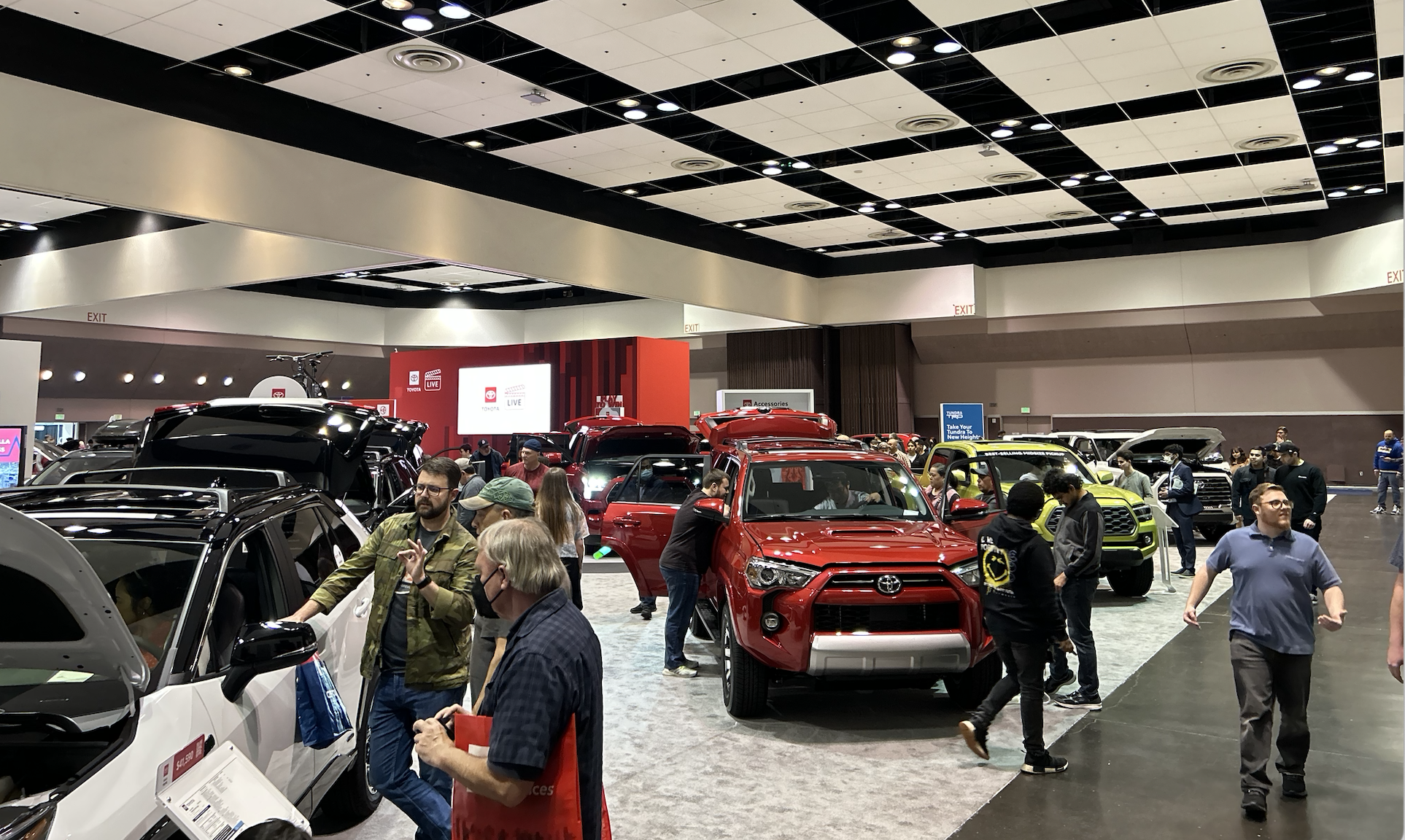The mere mention of the words “car show” might evoke a sense of nostalgia or tricked-out exoticism, but at the Silicon Valley Auto Show, it’s all about showcasing what the modern, everyday customer is looking for.
According to Brian Moody, an editor at Kelley Blue Book, that means cars that are less reliant on gas, and affordable options that come with driver-assistance technology such as blind-spot monitoring and parking assistance.
“Electric cars are becoming more mainstream, but the prices are still too high,” Moody said. “There are hybrid options that are often overlooked, and they’re a good bridge between gas and full electric.”
“Nowadays, there are new cars that can easily go 50-60 miles per gallon,” Moody said. “I’m glad these shows are back. There’s only so much you can learn from photos online.”
The show returned in-person at the Santa Clara Convention Center for the first time after a two-year hiatus and featured major car manufacturers such as Toyota, Volkswagen, Kia and Ford all displaying their latest and greatest models on the trade room floor for visitors to peruse as they please.
Previous renditions of the show were held in Downtown San Jose whenever the convention came to the Bay Area.
“It’s just a great place to do your research if you’re in the hunt for a new car,” said event publicist DeeDee Taft, who also pointed out that there were no salespersons on the floor. “You can sit inside the cars to see if they look and feel right. People don’t like being sold to or pressured anymore.”
Taft and her team organize auto shows like this all across the country and said they would have liked to return in-person earlier had it not been for pandemic-related setbacks. She lamented that this year’s display was smaller than in years past but was encouraged by the turnout.
A unique benefit to these shows is that manufacturers can tailor their displays depending on the market, she said.
“[In the Bay Area], there’s a sense that it’s a tech savvy market and people are more willing to adopt alternatives to gas,” Taft said.
According to car registration data, California is now the No. 1 state in electric vehicle adoption nationwide. In San Francisco, Mayor London Breed has also pledged to make sure every registered car in the city is electric by 2040.
California offers rebates for the purchase or lease of electric vehicles, and the federal government has been offering a tax credit for the same transactions since 2009.
Despite all of the talk of electric vehicles, a notable absence from the show was none other than Tesla. In its place, visitors flocked to test-drive alternative vendors such as Polestar or the new Kia Niro EV.
Tinh Phan, a car industry veteran and now manager at Polestar, said the average wait time to test-drive its new cars has been two hours. Unlike Tesla, which is a closed-ended product, Polestar is powered by Google and assembled using car-industry parts.
“It drives and feels like a real car,” Phan said. “If you like driving, say, a BMW, you’ll love this car.”
On the same floor, local universities including San Jose State University (SJSU) and UC Berkeley also showcased vehicles designed by their engineering students.
Harry Quackenboss, professor of mechanical engineering at SJSU and advisor to the student-run formula racing team, said that technology and automobiles are now more intertwined than ever.
Since first building its own cars 14 years ago to compete in global competitions, the team now produces both a traditional combustion, gas-powered car and a pure electric car.
“There’s a lot of big talk about electric taking over, but one thing that’s always proven to be true is that old [software] protocols last a lot longer than the time it takes for new protocols to roll out,” Quakenboss said. “I think combustion is going to be around for a while, only the designs will have so much technology in them.”
The SJSU title-winning combustion car contains 800 feet of wire and dozens of electronic sensors, Quakenboss pointed out.
“It’s not just about the chassis or suspension anymore,” he said. “Software engineers play a huge role in our team and car shops in the industry.”
That’s why he and his students are at the auto show usually geared toward consumers.
“One advantage that we have is that we’re so close to industry,” Quakenboss said. “The real value for us is talking to parents and letting them know that their kids can have a future in tech that isn’t just these flashy internet companies.”
